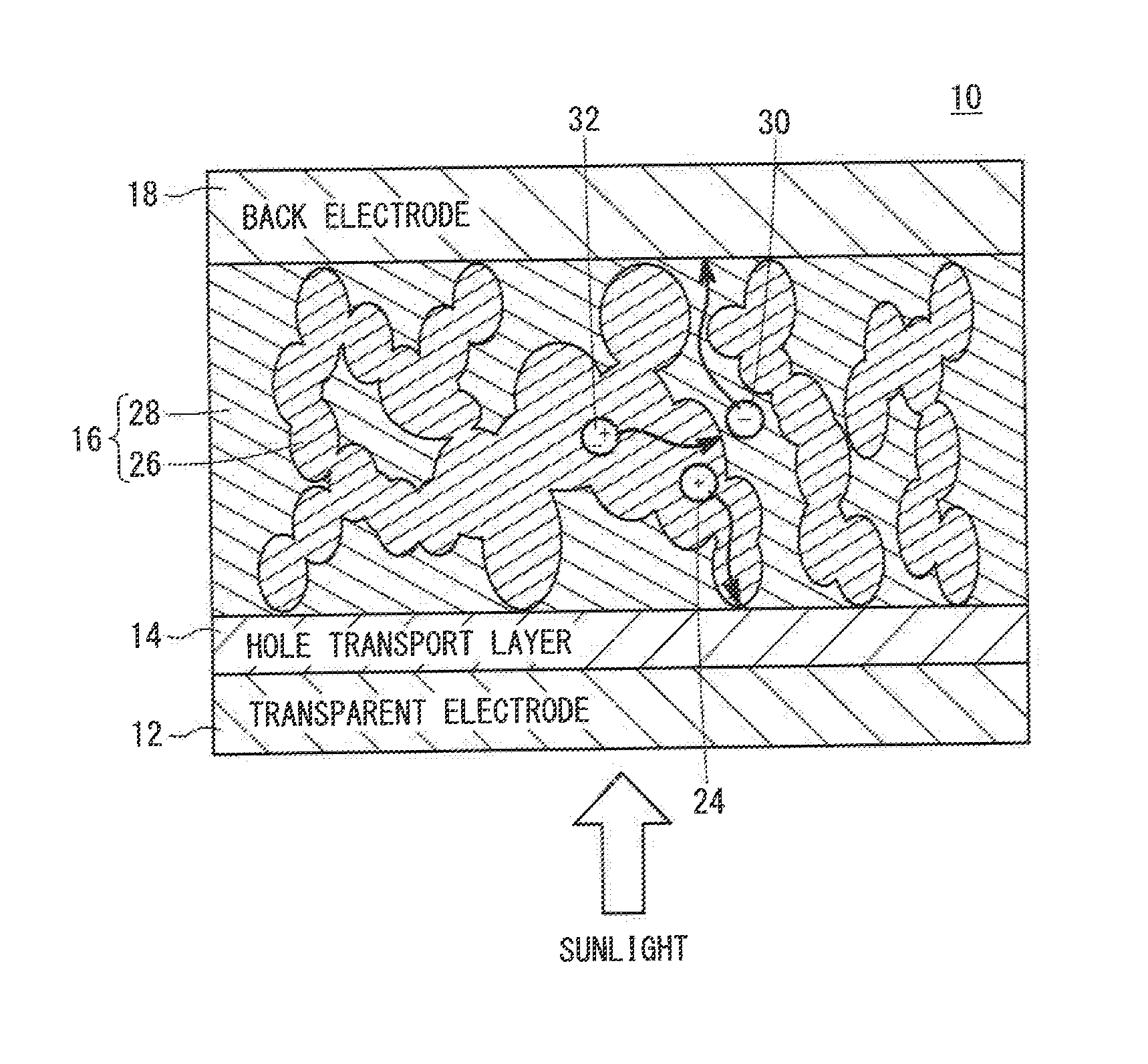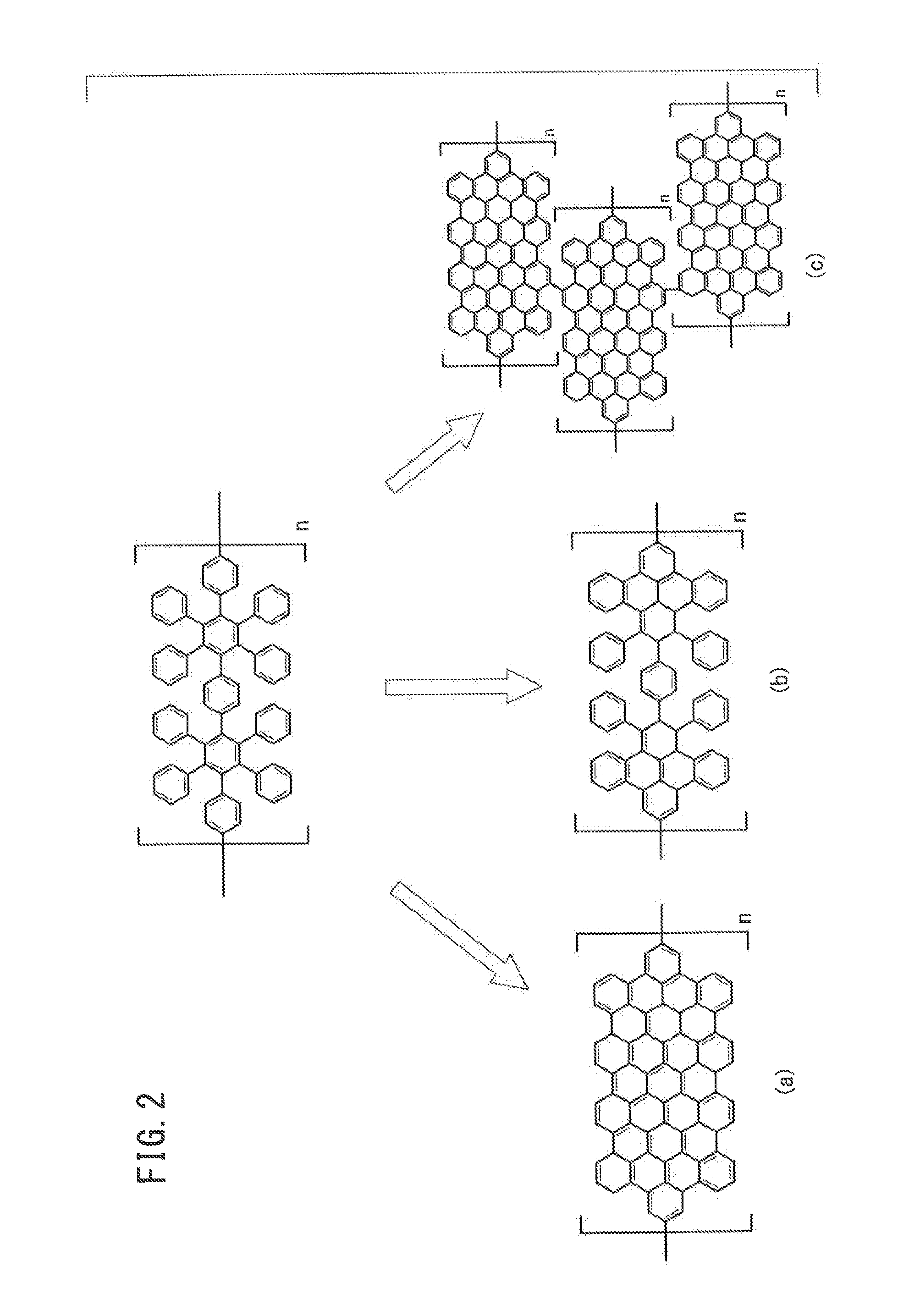Photoelectric Conversion Material, Method For Producing The Same, And Organic Photovoltaic Cell Containing The Same
a photoelectric conversion and organic technology, applied in the direction of solid-state devices, sustainable manufacturing/processing, final product manufacturing, etc., can solve the problems of large number of processes, low-molecular compound soluble in organic solvent, and inability to produce donors, etc., to improve photoelectric power conversion efficiency, improve sunlight utilization efficiency, and high open-circuit voltage voc
- Summary
- Abstract
- Description
- Claims
- Application Information
AI Technical Summary
Benefits of technology
Problems solved by technology
Method used
Image
Examples
Embodiment Construction
[0056]A preferred embodiment of the photoelectric conversion material and the production method of the present invention will be described in detail below, using a bulk heterojunction-type organic photovoltaic cell having a photoelectric conversion layer containing the material with reference to the accompanying drawings.
[0057]FIG. 1 is a schematic longitudinal cross-sectional view of a principal part in a bulk heterojunction-type organic photovoltaic cell (BHJ solar cell) 10 according to this embodiment. In the BHJ solar cell 10, a hole transport layer 14, a photoelectric conversion layer 16, and a back electrode 18 are stacked in this order on a transparent electrode 12.
[0058]The transparent electrode 12 acts as a positive electrode. Thus, holes 24 are transferred to the transparent electrode 12. The transparent electrode 12 may be composed of a material having a sufficient transmittance of a light such as sunlight, and examples of such materials include indium-tin composite oxide...
PUM
| Property | Measurement | Unit |
|---|---|---|
| Molecular weight | aaaaa | aaaaa |
Abstract
Description
Claims
Application Information
 Login to View More
Login to View More - R&D
- Intellectual Property
- Life Sciences
- Materials
- Tech Scout
- Unparalleled Data Quality
- Higher Quality Content
- 60% Fewer Hallucinations
Browse by: Latest US Patents, China's latest patents, Technical Efficacy Thesaurus, Application Domain, Technology Topic, Popular Technical Reports.
© 2025 PatSnap. All rights reserved.Legal|Privacy policy|Modern Slavery Act Transparency Statement|Sitemap|About US| Contact US: help@patsnap.com



